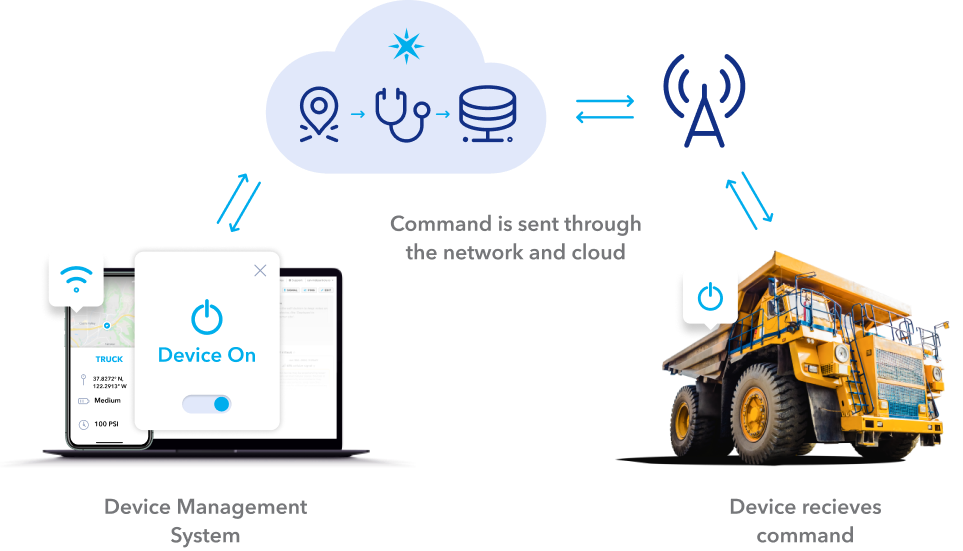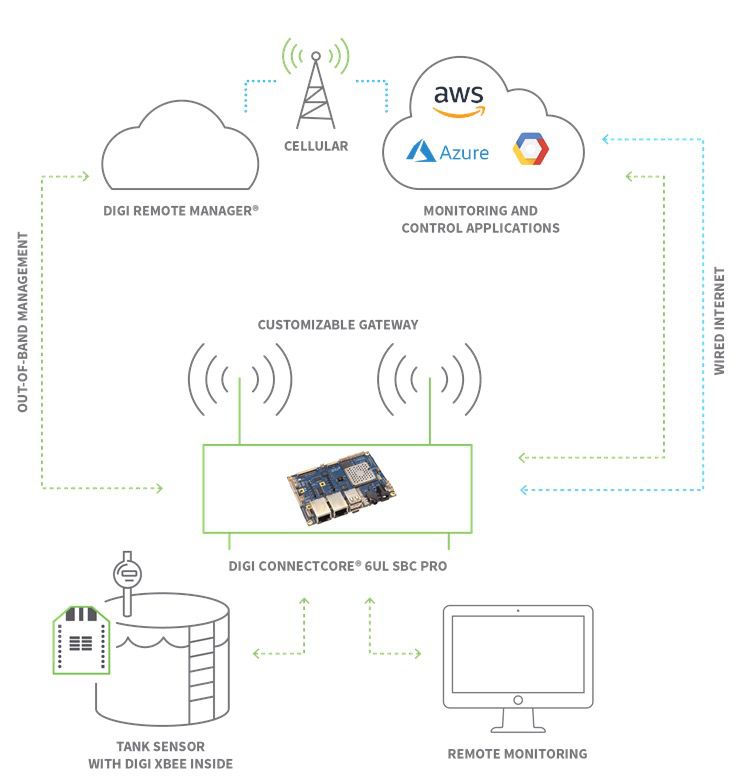Remotely Control IoT Devices: Your Guide In 2024!
Is the future of technology already within our grasp, shaping the way we interact with the world around us? The ability to remotely control Internet of Things (IoT) devices is rapidly transforming industries and redefining the boundaries of convenience and efficiency.
From the simplest home appliances to complex industrial systems, the proliferation of connected devices has created a landscape ripe for remote management. No longer tethered to physical proximity, individuals and organizations can now monitor, manage, and manipulate devices from anywhere in the world with an internet connection. This paradigm shift is not merely a convenience; it represents a fundamental change in how we perceive and utilize technology. The potential applications are vast, touching upon everything from smart homes and healthcare to agriculture and manufacturing. As the number of connected devices continues to skyrocket, the importance of securely and effectively remotely controlling them becomes increasingly critical.
Consider the smart home. Imagine adjusting your thermostat, locking your doors, or turning on the lights before you even arrive home from work. This level of control is no longer science fiction; it is the reality for many. Using smartphones, tablets, or even voice commands, users can effortlessly manage their homes from anywhere. This offers not only convenience but also enhanced security and energy efficiency. For example, a homeowner can remotely monitor security cameras and receive alerts if any unusual activity is detected. They can also optimize energy consumption by adjusting the thermostat based on real-time conditions, leading to significant cost savings.
The impact extends far beyond the domestic sphere. In the healthcare industry, remotely controlled medical devices are revolutionizing patient care. Doctors can monitor patients' vital signs remotely, make adjustments to medical equipment, and provide timely interventions, even when they are not physically present. This is particularly beneficial for patients in rural areas or those with mobility limitations. Remotely controlled devices can also streamline hospital operations, allowing for efficient management of equipment and resources.
In agriculture, the potential for remotely controlling IoT devices is equally transformative. Farmers can utilize sensors to monitor soil conditions, weather patterns, and crop health remotely. They can then adjust irrigation systems, apply fertilizers, and manage pest control measures with precision, leading to increased yields and reduced resource consumption. This "smart farming" approach is essential for sustainable agricultural practices and addresses the growing global demand for food.
Manufacturing is another area where remotely controlling IoT devices is making a significant impact. Factories can use sensors and actuators to monitor production lines, detect equipment failures, and optimize processes remotely. This improves efficiency, reduces downtime, and enhances worker safety. For example, a technician can diagnose a problem with a machine from a remote location and perform necessary adjustments without having to physically visit the factory floor.
The rise of remotely controlled IoT devices also presents new challenges. The primary concern is security. As more devices become connected, they become potential targets for cyberattacks. It is essential to implement robust security measures to protect these devices from unauthorized access and malicious activities. This includes using strong passwords, encrypting data, and regularly updating firmware. Additionally, it is important to consider the privacy implications of remotely controlling devices. Data collected by these devices must be handled responsibly and used only for the intended purposes.
Compatibility is another critical consideration. With a multitude of devices and protocols available, ensuring interoperability is a challenge. The industry needs to establish standards and protocols to facilitate seamless communication between different devices. This will allow users to manage devices from various manufacturers and platforms with ease.
The benefits of remotely controlling IoT devices are undeniable. However, it is imperative to address the associated challenges to realize the full potential of this technology. By prioritizing security, privacy, and compatibility, we can create a future where technology seamlessly integrates with our lives, improving efficiency, enhancing convenience, and transforming industries.
The underlying technologies that enable remote IoT control are diverse and evolving. At the core, these systems leverage wireless communication protocols such as Wi-Fi, Bluetooth, Zigbee, and cellular networks (4G, 5G) to transmit data and commands between devices and a central control point. Cloud computing platforms play a critical role by providing the infrastructure for data storage, processing, and management. These platforms also offer services for device registration, security management, and remote access control.
The control mechanisms themselves vary widely. Some devices use dedicated mobile applications, while others integrate with voice assistants like Amazon Alexa or Google Assistant. Web-based dashboards provide a unified interface for managing multiple devices and visualizing data. Advanced systems leverage artificial intelligence (AI) and machine learning (ML) to automate tasks and provide predictive maintenance capabilities.
Security considerations are paramount. Encrypting data during transmission and at rest is essential to protect sensitive information from unauthorized access. Authentication mechanisms, such as multi-factor authentication, add an extra layer of security. Regular security audits and penetration testing help identify and address vulnerabilities. The implementation of robust security protocols ensures that the data remains secure.
The ongoing development of IoT platforms provides a holistic solution for remote IoT control. These platforms typically offer device management capabilities, including device registration, configuration, and firmware updates. They provide secure communication channels, data storage, and analytics tools. They also integrate with third-party services, such as cloud computing providers and application developers, to expand functionality and create custom solutions.
Standardization efforts are critical for the widespread adoption of remote IoT control. The development of open standards and protocols promotes interoperability among devices from different manufacturers. This makes it easier for users to manage a diverse range of devices from a single interface. Initiatives such as the Open Connectivity Foundation (OCF) and the Internet Engineering Task Force (IETF) are working to define and promote these standards.
The future of remotely controlling IoT devices is bright. As connectivity becomes ubiquitous, the potential applications will only continue to expand. New technologies, such as edge computing and blockchain, are poised to play a key role in the advancement of these systems. Edge computing enables processing data closer to the devices, reducing latency and improving efficiency. Blockchain technology enhances security and transparency by providing a tamper-proof record of device interactions.
The development of 5G networks will also play a crucial role in enabling more reliable and faster remote control of IoT devices. 5G's low latency and high bandwidth capabilities will be especially critical for applications such as remote surgery, autonomous vehicles, and industrial automation.
Ethical considerations are also increasingly important. As AI-powered systems become more integrated with IoT devices, it is essential to address issues of bias, fairness, and accountability. It is crucial to ensure that these systems are used responsibly and do not perpetuate existing inequalities. Data privacy regulations, such as GDPR and CCPA, are setting the standard for the ethical use of data collected by IoT devices.
In conclusion, the ability to remotely control IoT devices is a powerful force for innovation. However, it is crucial to prioritize security, privacy, and compatibility to harness its full potential. By embracing new technologies and adhering to ethical principles, we can create a future where technology seamlessly integrates with our lives, making them more efficient, convenient, and secure.
Beyond the practical advantages, the ability to remotely control IoT devices fosters a greater sense of connectedness. The ability to monitor and manage devices from anywhere in the world reduces the feeling of being "tied down." This is particularly beneficial for individuals who travel frequently, have demanding work schedules, or have responsibilities that require them to be in multiple places at once. It allows them to maintain control over their homes, businesses, or other assets, even when they are physically distant.
The potential for economic growth is also substantial. By enabling remote monitoring and control of industrial equipment, businesses can optimize operations, reduce downtime, and improve efficiency. This leads to cost savings, increased productivity, and enhanced competitiveness. The development of new IoT solutions and services also creates new job opportunities in fields such as software development, data analytics, and cybersecurity.
The impact extends into unexpected domains. Consider the possibilities for environmental conservation. Remotely controlled sensors can monitor air and water quality, track wildlife populations, and detect wildfires. This information can be used to make informed decisions about resource management, conservation efforts, and disaster response. This creates an ecosystem of solutions and service providers.
The future is not without its challenges. The "Internet of Things" encompasses a vast array of devices, each with its unique characteristics and capabilities. Ensuring compatibility and interoperability among these diverse devices requires a concerted effort from manufacturers, developers, and standards organizations. The development of open standards and protocols is essential to facilitate seamless communication between devices from different vendors. This requires collaboration, not competition.
The sheer volume of data generated by IoT devices presents another challenge. The analysis of this data requires sophisticated tools and techniques. Data scientists and analysts are needed to extract meaningful insights from the data and inform decision-making. The protection of sensitive data from cyberattacks and unauthorized access is a paramount concern. Robust security measures, including encryption, authentication, and access controls, are essential to safeguard this data.
The ethical implications of remotely controlling IoT devices must also be carefully considered. It is important to establish clear guidelines for data collection, storage, and usage. This includes ensuring transparency, obtaining user consent, and adhering to privacy regulations. The potential for misuse of this technology, such as surveillance or manipulation, must be addressed through education, policy, and technical safeguards.
The deployment of remotely controlled IoT devices is not a monolithic endeavor. The specific technologies and solutions required vary depending on the application. In healthcare, for example, remote patient monitoring systems may use wearable sensors, connected medical devices, and cloud-based platforms to collect and transmit patient data. In agriculture, precision farming systems may use soil sensors, weather stations, and drone-based imaging to monitor crop health and optimize irrigation and fertilization. There is no one-size-fits-all solution.
The development of specialized software and hardware is essential to support the diverse applications of remotely controlled IoT devices. Embedded systems engineers are needed to design and develop the firmware that runs on these devices. Software developers are needed to create the mobile applications and web interfaces that allow users to interact with the devices. Data scientists are needed to analyze the data generated by these devices and generate actionable insights. These skilled professionals are the driving force behind the development and deployment of remotely controlled IoT systems.
The long-term implications of this technology are profound. As these systems become more sophisticated and integrated, they will transform the way we live, work, and interact with the world around us. The ability to remotely control devices will become commonplace, and the advantages will become more pronounced. As connectivity becomes more ubiquitous, the potential applications will only continue to expand.


